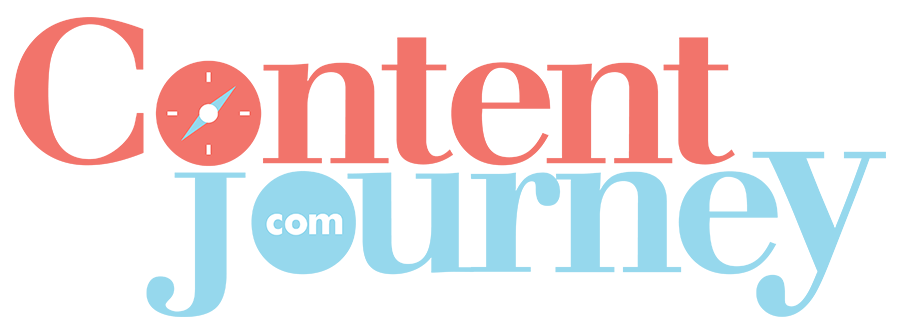Working With and Leading Remote Teams
The past year saw a remote working revolution in companies all across the globe. The change was due to factors beyond anyone’s control, but it was a revolution nonetheless.
Some businesses (like Content Journey) were prepared because they were already working remotely. But the COVID-19 pandemic threw others abruptly into this new way of work. With this sudden change, thousands of team leaders adapted to leading fully remote teams, which came with exciting opportunities and unique challenges.
More than a year into the pandemic, remote work is here to stay. Current and future leaders must learn how to overcome the challenges of working with and leading remote teams.
Below are some of the things you can do to be a great remote leader and ensure your team feels fulfilled and supported in this new era of work.
Benefits and Challenges of Working With and Leading Remote Teams
The move toward remote work came with benefits and challenges, especially for those tasked with leading teams. Let’s talk about each.
Benefits of Remote Teams
Some companies embraced remote work before the pandemic. Others aren’t going back to “old” ways of work because of the many benefits of working remotely. The most significant benefits of remote teams include:
- Employee productivity increases
- Increases in employee efficiency
- Attracting top talent from all over the country
- Savings on physical office costs
- Less absenteeism due to uncontrollable circumstances
- Higher employee retention rate
Work/Life Balance
Achieving greater work/life balance is important to most people. By removing the commute and allowing for flexible work hours, your employees can create better balance in their lives.
Employees can use the extra time in the day to catch up on tasks around the house, take children to school, walk the dog, or go to the gym before starting work.
Employees also have greater flexibility to run errands or pop to appointments during the day while making up the work later.
Achieving a good work/life balance is crucial for happy, healthy, and committed employees. This flexibility is one of the main benefits of remote working when appropriately implemented.
Common Challenges
While there are many benefits of remote work, working with and leading remote teams also comes with its challenges.
Remote teams look different across industries, companies, and countries. You may lead a team with people in various cities and time zones. Alternatively, your team could all live within blocks of one another. Regardless of what your team looks like, the challenges of leading remote workers include:
- Lack of face-to-face supervision and support
- Difficulty building trust between managers and employees
- Lack of communication within teams
- Loneliness and social isolation of employees
- Difficulty maintaining company culture
Overcoming Challenges
As much as remote work can come with challenges, there are plenty of things you can do as a team leader to overcome them. Some of the easiest things you can do include:
- Scheduling daily check-ins with your team
- Setting expectations and tracking progress regularly
- Making sure you’re readily available and accessible
- Showing empathy toward employees concerns and problems
- Offering flexibility with your employees home work situations
- Encouraging social interactions and activities outside of work tasks

Common Traits of Great Remote Leaders
Remote work can increase productivity and lead to greater work/life balance for employees. But it can also result in a breakdown in communication, relationships, and company culture. It’s up to team leaders to ensure that your team feels fulfilled, balanced, and supported while working remotely.
The following are a few common traits of great remote leaders you should strive for.
Focuses On Outcomes, Not Activity
Just because you can see someone is at their desk for a certain number of hours each day doesn’t mean work is getting done.
Micro-managing your remote team based on the hours they work or the activity you see is not the way to go. Instead, clearly define the outcomes you’re looking for. Trust your employees to own their projects and manage their schedules, then measure results accordingly.
Not worrying about what your team is doing every second of the day will make you feel calmer. Additionally, your employees feel trusted and valued.
“There is not a single document that the Content Journey team works on that we all do not touch. So we have to trust and rely on each other for success, and so far it has only made us stronger.” Lindsey Miller
Emphasizes Communication
While it’s important not to micro-manage, regular communication is still the key to success when working with and leading remote teams. As a remote leader, you must keep a constant channel of communication open with your team.
Communication is vital because:
- You know what your employees are working on
- You can track the progress of projects and assignments
- You can offer praise or feedback on employees’ work
Furthermore, having open communications channels helps employees know they can come to you with questions or concerns.
A great remote leader checks in with their employees daily and has an open approach to communication, preferably using tools such as IMs or Slack. These tools allow you to be available, accessible, and less formal than email.
Regular and meaningful communication improves relationships and builds trust and support in remote teams.
Shows Empathy and Flexibility
A major part of remote working is the flexibility that comes with it. The traditional 9-5 working day has all but disappeared. Each employee now has their unique work situation.
Some people work better early in the morning while some prefer working evenings. Others have partners and children at home, while others don’t. Some people have their own private home offices, while others find it easier to work from their local coffee shop.
As a team leader, be empathetic toward each employee’s work situation. As long as the work gets done, allow your team members to set their schedules. Flexible schedules lead to greater productivity and make your employees feel more motivated and fulfilled in their jobs.
“I was never an employee or an entrepreneur that appreciated being tied to a desk for no reason. So I have created a company that follows the same rules. We work hard towards our projects and those deadlines, if the work is done, then we go home. Today, I am leaving early to pick up my kids and bake a cake with them. And there is no guilt! My team has the flexibility to do the same.” Lindsey Miller
Encourages Social Interactions and Builds Relationships
A great remote leader also knows the importance of building relationships and encouraging social interactions beyond business-related communication.
Help combat loneliness and social isolation due to remote work by:
- Starting video meetings 10 minutes early to allow for general chit-chat
- Hosting virtual coffee mornings or happy hours
- Organizing the occasional in-person get-together
- Creating Slack channels that are off-topic and enable employees to socialize about personal interests
Maintaining Company Culture
One of the biggest challenges of leading a remote team is maintaining company culture away from the office.
Company culture refers to the attitudes, values, ideals, and goals shared among management and employees. The term is also applicable to the general work environment of a company.
Having a healthy company culture ensures all team members are on the same page about how things are done in your business, whether that’s a culture of open communication, professionalism, or fun.
This culture leads to happier and more productive employees who are more likely to stick with your company for the long run.
The following are a few things you can do to maintain company culture.
Promote Psychological Safety
A large part of maintaining any company culture involves promoting an environment of psychological safety.
Psychological safety means your team feels confident enough to speak up, ask for help, voice their concerns and opinions, and be themselves around their colleagues without fear of being ignored, judged, or punished.
Unfortunately, the physical separation of remote teams has led to lower psychological safety in many organizational cultures. That is why, as a leader, you should encourage regular and meaningful communication and help everyone get to know each other on a personal level. Personal relationships will foster mutual trust within your team.
You also should design team meetings so everyone gets a chance to speak, not just the dominant voices.
Clarify Expectations
People feel more comfortable and psychologically safe when they know what’s expected of them, especially in the workplace.
As a remote leader, it’s important to set clear expectations with your team. Communicate early on what you expect of each person, when deadlines are, and the end goals.
Clear expectations make employees feel more comfortable and in tune with each other. Setting expectations also allows people to manage their workload better and enjoy greater work/life balance.
Support Managers
Managers are crucial to maintaining company culture through their leadership style and through the support they offer employees.
But managers are also the people most affected by significant changes. They may feel accountable for many of the challenges or disruptions that remote work brings.
Be sure you provide practical and emotional support to the rest of your leadership and management team. Listen to their concerns and offer additional training and development they may need.
The support you offer your managers will trickle down through the organization and result in more productive, collaborative, and well-supported remote teams.







